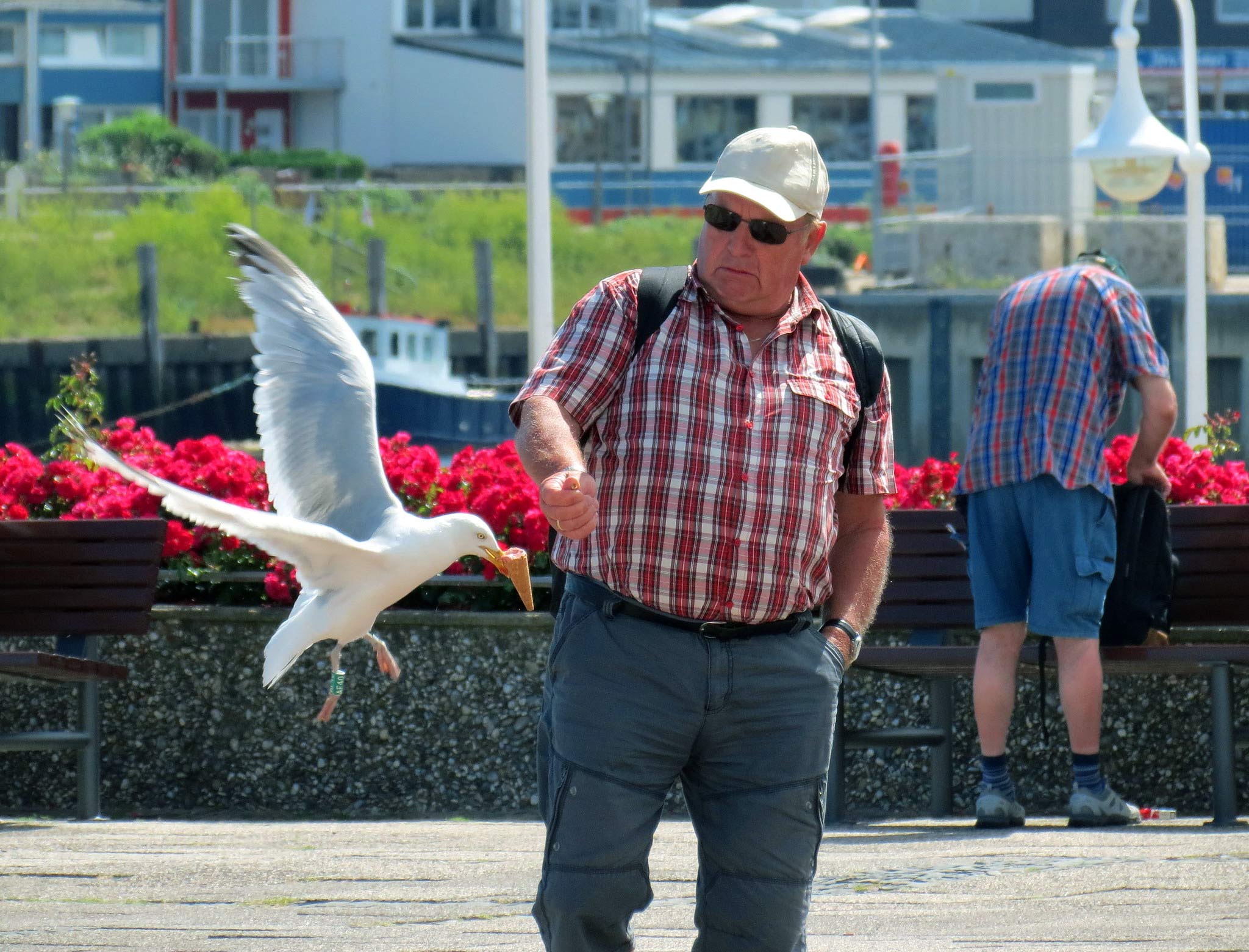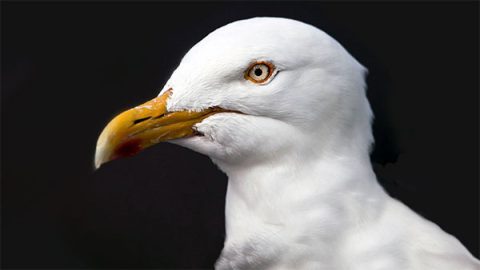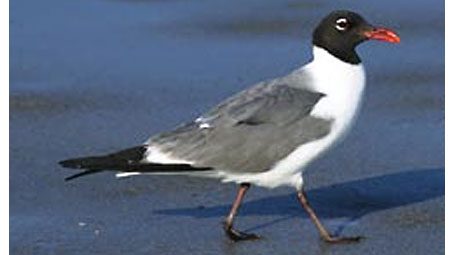When Gulls Attack, Just Stare Back
by Marc Devokaitis
August 9, 2019
Soaring, swooping gulls add to the magic of a summer day at the beach—but they’re not always a welcome sight: Herring Gulls, for example, can be aggressive around people who are eating, and on some beaches will even swipe food right out of people’s hands. Keep your guard up or else a stealthy bird may make off with your fried clams or ice cream cone.
A new study points at a way to safely deter these would-be food-snatchers: engage the gulls in a good old-fashioned stare-down.
Researchers from the University of Exeter in the U.K. wanted to know whether Herring Gulls foraging on beaches in one region of England would react to a perceived threat as they make a play for a bit of food. To do this, they designed an experiment to test the gulls’ “sensitivity to gaze.”
The scientists placed a bag full of french fries a few feet from themselves, then tracked the reactions of approaching gulls as the researchers either looked away from, or looked directly at, an approaching gull.
Out of 74 individual Herring Gulls that the scientists attempted to test, they could only get 19 of them to undergo complete trials for both conditions, indicating that most gulls are not predisposed to snatch food from people in the first place. But out of the 19 birds that met the study criteria, they found that gulls being goggled took 21 seconds longer, on average, to make a go at their quarry.
They also found a huge variation in behavior of individual gulls. When NOT being looked at, the swiftest bird took just three seconds to approach and steal the fries; the slowest took nearly three minutes. All the birds took the food eventually when not being watched directly.
Under the researchers’ gaze, some gulls were still barely deterred. The brashest gull took just four seconds to grab the grub while being given the eye. (Interestingly, this was the same bird that was also the quickest to the food in the other part of the trial.) On the other hand, 6 of the 19 gulls failed to take the food at all after 5 minutes of steady staring from a scientist
“Those that were that quick were pretty much focused on the chips,” says Madeleine Goumas, the lead author on the paper. “Those that took a longer amount of time would often stop repeatedly, take a meandering approach, and—most importantly—were looking back at me in the eye.”
Reference
Goumas, M., Burns, I., Kelley, L.A., Boogert, N.J. 2019. Herring gulls respond to human gaze direction. Biology Letters 15: 20190405. http://dx.doi.org/10.1098/rsbl.2019.0405.

All About Birds
is a free resource
Available for everyone,
funded by donors like you
American Kestrel by Blair Dudeck / Macaulay Library


